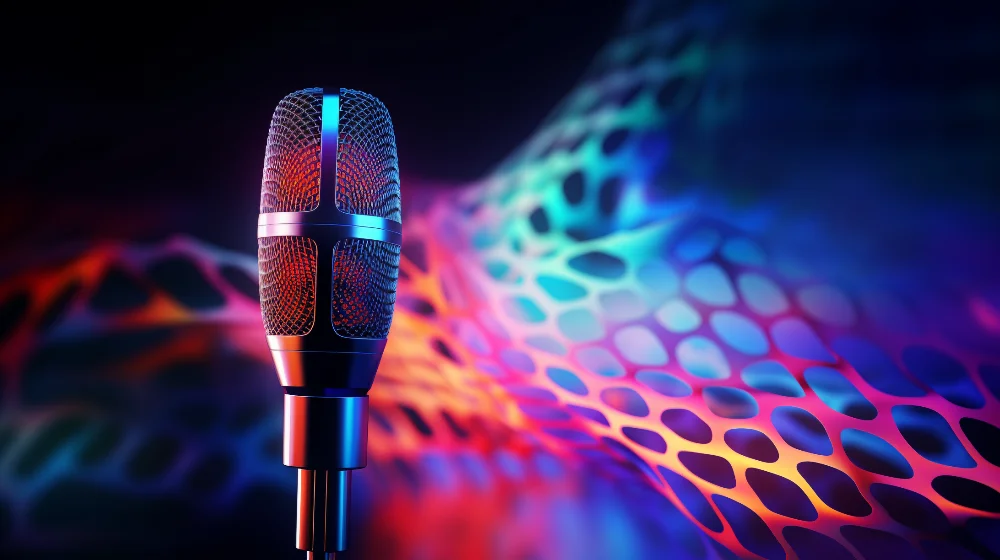What is Autotune?
Autotune is an audio processing technology widely used in music production for correcting pitch in vocal and instrumental performances.
Since its inception in 1997, it has evolved from a subtle pitch correction tool to a distinctive effect that shapes the sound of modern music. In this article, we’ll delve into the world of Autotune, exploring its dual role as a pitch-correction software and a creative enhancer in the music industry.
Originally intended to discreetly correct off-key inaccuracies, Autotune has grown to become a sonic game-changer, often used to create a unique, synthesizer-like vocal effect. This technology, which has been both praised and demonized, is more than just a tool for achieving pitch-perfect performances. Autotune has revolutionized the sound of popular music and sparked debates about authenticity in the digital age.
Join us as we demystify this influential audio processor and examine how it’s shaping the future of music. Welcome to the wonderful world of Autotune.
Key Takeaways
- Auto-Tune is an audio processor that measures and alters pitch in vocal and instrumental music recording and performances.
- Originally intended to correct off-key inaccuracies, Auto-Tune is now widely used as an effect to distort the human voice and create a synthesizer-like sound.
- Auto-Tune has revolutionized the sound of popular music, becoming a common tool for artists to achieve a polished and pitch-perfect vocal performance.
- The use of Auto-Tune has sparked debates about authenticity and the role of technology in music, with some artists embracing it as a creative tool while others criticize its overuse and lack of vocal authenticity.
Introduction: Exploring the World of Vocal Enhancement

As you enter the realm of vocal enhancement, you’ll soon encounter a critical player: Autotune. This audio processor, which burst onto the scene in 1997, has revolutionized the music industry by altering pitch in vocal and instrumental recordings.
Its applications range from subtle pitch correction to creating distinctive, synthesizer-like effects, making it a versatile tool in any recording artist’s arsenal.
Brief Overview of Autotune as a Music Industry Revolution
In exploring the world of vocal enhancement, you’ll quickly realize that Auto-Tune has revolutionized the music industry since its introduction in 1997. Designed by Andy Hildebrand and released by Antares Audio Technologies, this autotune plugin provides pitch correction that has since defined a new era in music.
Looking at the history of Auto-Tune, you’ll see it’s not just a tool, but a game-changer, transforming vocals and shaping the sound of modern music.
What is Autotune?: Understanding the Basics

You’re likely familiar with Autotune as a ubiquitous element in modern music production, but what is autotune?
At its core, Autotune is a software tool designed to correct pitch inaccuracies in vocal and instrumental music recordings.
To truly appreciate its impact, you’ll need to understand how it functions and the mechanism of pitch correction it employs.
Defining Autotune and Its Primary Functions

Let’s dive into what Auto-Tune is and how it functions to enrich the music you love.
Auto-Tune is a vocal pitch correction tool initially designed to fix off-key inaccuracies. It’s a pitch correction software beloved by singers who use Auto-Tune to produce smooth, polished performances.
Auto-tune technology alters pitch, creating a synthesized effect. Besides being a correction tool, it’s also used creatively in music production.
The Mechanism of Pitch Correction in Autotune
So, you’re probably wondering how Auto-Tune actually corrects pitch, right? Well, this vocal pitch correction technology uses autocorrelation to measure and correct pitch. Here’s a simple breakdown:
| Auto-Tune Action | Description |
|---|---|
| Detects Pitch | Analyzes the input sound and determines its pitch |
| Corrects Pitch | Compares the detected pitch to the desired pitch and adjusts it |
| Retune Speed | Determines how quickly the correction should occur |
| Final Output | Outputs the corrected sound |
With these pitch correction tools, Auto-Tune software ensures your vocals are always on point.
The History and Development of Autotune
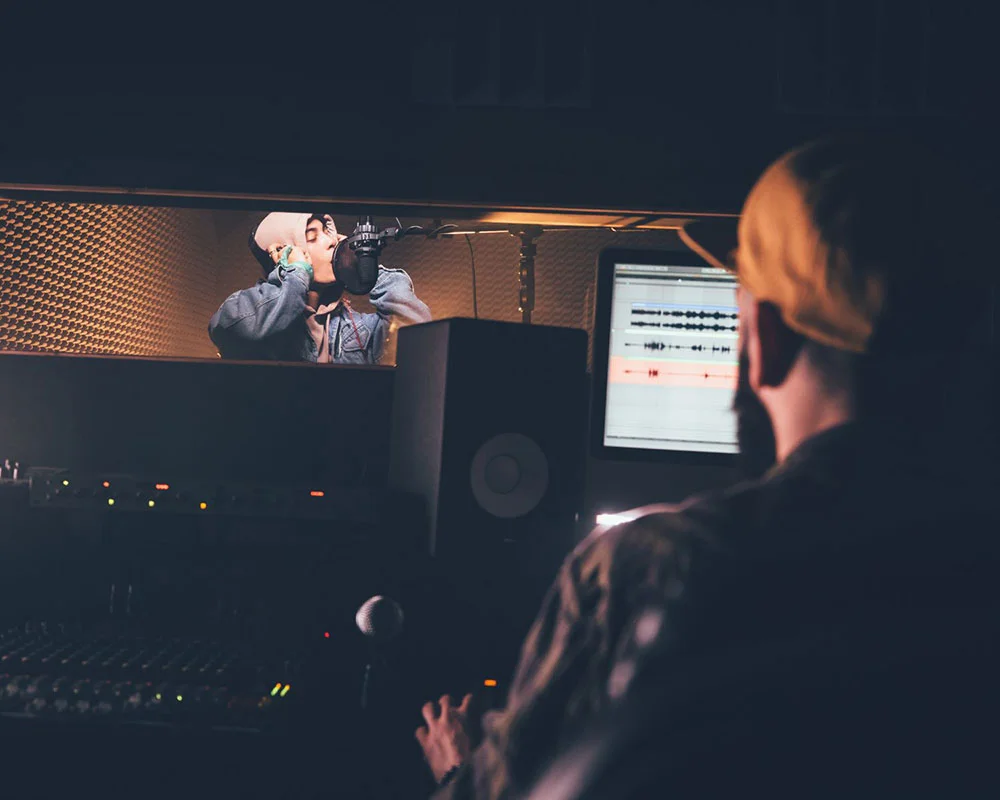
You might be curious about the origins of Autotune and the key milestones in its evolution.
It’s a fascinating journey that starts with a research engineer named Andy Hildebrand.
Let’s explore how this revolutionary technology was born, evolved, and shaped the soundscape of modern music.
Tracing the Origins: Who Invented Autotune
Diving into the history of Autotune, you’ll find that it was invented by Andy Hildebrand, a research engineer who specialized in digital signal processing. He developed the algorithm on a custom Macintosh. He also presented the Antares Auto-Tune plugin at a NAMM show. Leveraging his PhD knowledge, Hildebrand created this transformative tool.
Tracing the origins: who invented autotune, we see how Hildebrand’s innovation changed how we use autotune today.
Key Milestones in the Evolution of Autotune Technology
Following on from the invention of Autotune by Hildebrand, let’s delve into the key milestones that marked the evolution and development of this transformative technology.
Initially, auto-tune was designed to discreetly correct pitch in real-time.
Its use expanded to autotune plugins for creative effects, leading to heavy use.
Today, the auto-tune effect isn’t just for pitch correction, it’s a defining sound in modern music.
Autotune in Action: How It’s Used in Music Production
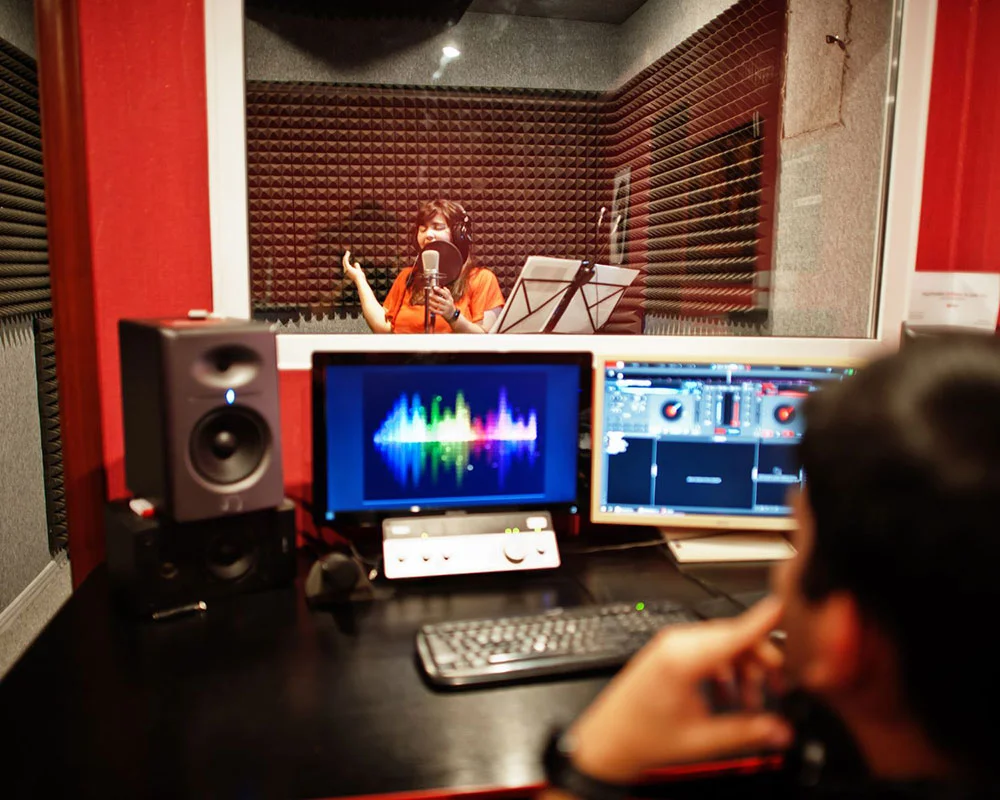
Now you’re stepping into the studio to see Autotune in action.
Picture this: a vocal track’s pitch wavering off the mark, then Autotune’s algorithms subtly nudging it back on track, or more dramatically, reshaping a singer’s voice into something otherworldly.
You’ve likely heard its impact, whether you knew it or not, in iconic tunes from artists across genres.
Typical Use Cases of Autotune in the Studio
When working in a studio, you’ll often find Autotune being used in a variety of ways to enhance musical recordings.
- Recording studios use auto-tune to correct pitch problems in a vocal track, ensuring a smooth sound.
- Artists have used auto-tune to create unique vocal effects, making their music more expressive.
- Autotune is also a reliable correction technology on the suggestion of producers to refine performances.
Iconic Songs and Artists That Utilized Autotune Effectively
In your journey through the world of music production, you’ll encounter several iconic songs and artists who utilized Autotune effectively.
When Auto-Tune became mainstream, artists like T-Pain and Kanye West used it to give their music a unique sound. Cher’s ‘Believe’ is another example.
However, its overuse led to Jay-Z’s ‘Death of Auto-Tune’, highlighting the impact on the music industry.
The Technical Side of Autotune

Let’s get technical with Autotune. You must understand its core features such as the musical key, input type, and retune speed, which dictate how your vocals will be processed.
Then, you’ll need to compare different Autotune plugins and software to find the perfect tool for your music production needs.
Breaking Down the Core Features: Musical Key, Input Type, and Retune Speed
While you’re exploring the technical side of Auto-Tune, it’s essential to understand its core features such as the musical key, input type, and retune speed.
- Musical Key: Auto-Tune adjusts to fit the song’s key, improving the autotune sound.
- Input Type: You can choose the input type, giving you control over their voice.
- Retune Speed: This setting allows for faster retune, used to discreetly correct imprecise notes or add a unique sound effect.
Comparing Different Autotune Plugins and Software
Now that you’re familiar with the core features of Auto-Tune, it’s time to delve into the world of different Auto-Tune plugins and software, comparing them based on their unique technical aspects.
Each piece of software subtly alters the vocal effect, shaping the sound of modern pop. For a broader range of options, including free tools, explore these free Autotune VST plugins to enhance your music production.
Used correctly, these tools can contribute to the evolution of modern music by enhancing and manipulating vocals.
Autotune’s Impact on the Music Industry
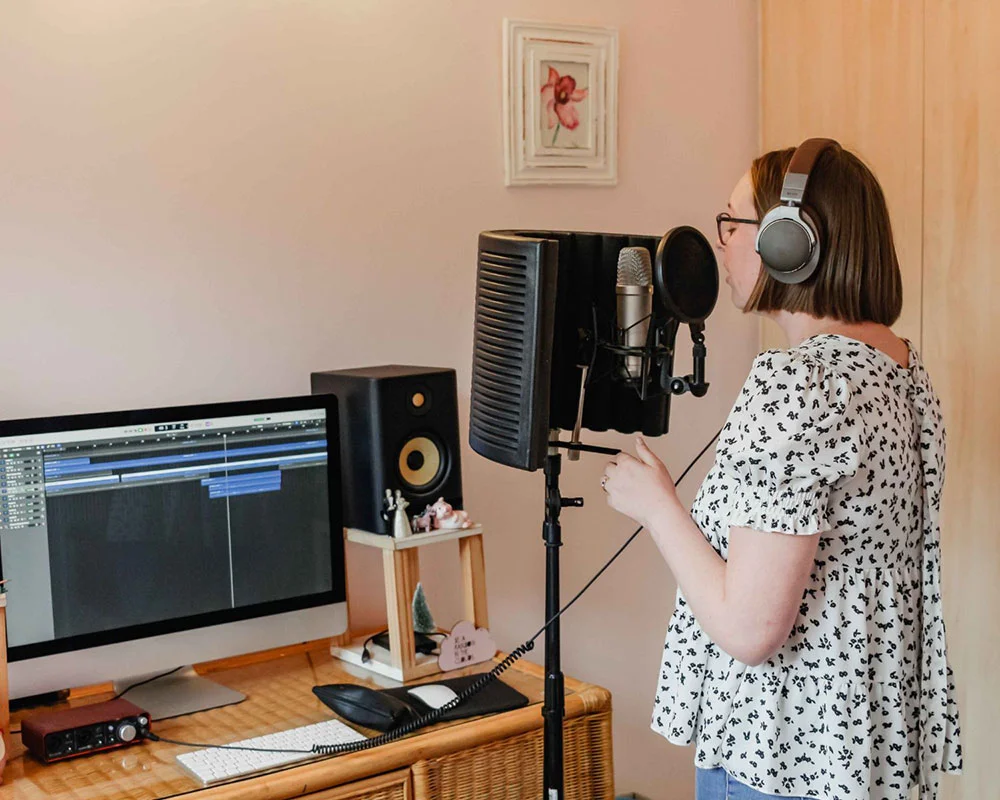
Consider how Autotune has significantly shaped modern music genres.
It’s not just a tool for pitch correction, but also a cultural phenomenon that’s received mixed responses from critics and audiences alike.
We’ll discuss its role, its impact, and the conversations it’s sparked within the music industry.
The Role of Autotune in Shaping Modern Music Genres
In your exploration of modern music genres, you’ve likely noticed Autotune’s profound impact on the industry’s sound and style.
- Autotune has revolutionized pop music and hip-hop, lending a distinctive robotic sound to tracks produced by artists like Kanye.
- This tool allows music producers to manipulate vocals, influencing the future of music.
- To understand the artistic reasons behind this trend, you can understand why singers use Autotune in their productions.
- Its widespread use continues to shape trends and styles, redefining the boundaries of musical creativity.
- If you’re interested in applying Autotune within a popular DAW, you can learn how to use Autotune in GarageBand for more detailed insights.
Analyzing the Cultural Significance and Reception of Autotune
As you delve deeper into the cultural implications of Autotune, you’ll uncover its profound impact on the music industry and its reception among artists and audiences alike.
Auto-tune has revolutionized how singers make music, enhancing the human voice to create popular music that resonates with many.
Yet, its cultural significance is mixed, with some praising its innovation and others criticizing its artificial perfection.
This reception of Autotune continues to shape its role in music.
Autotune: A Tool or a Crutch
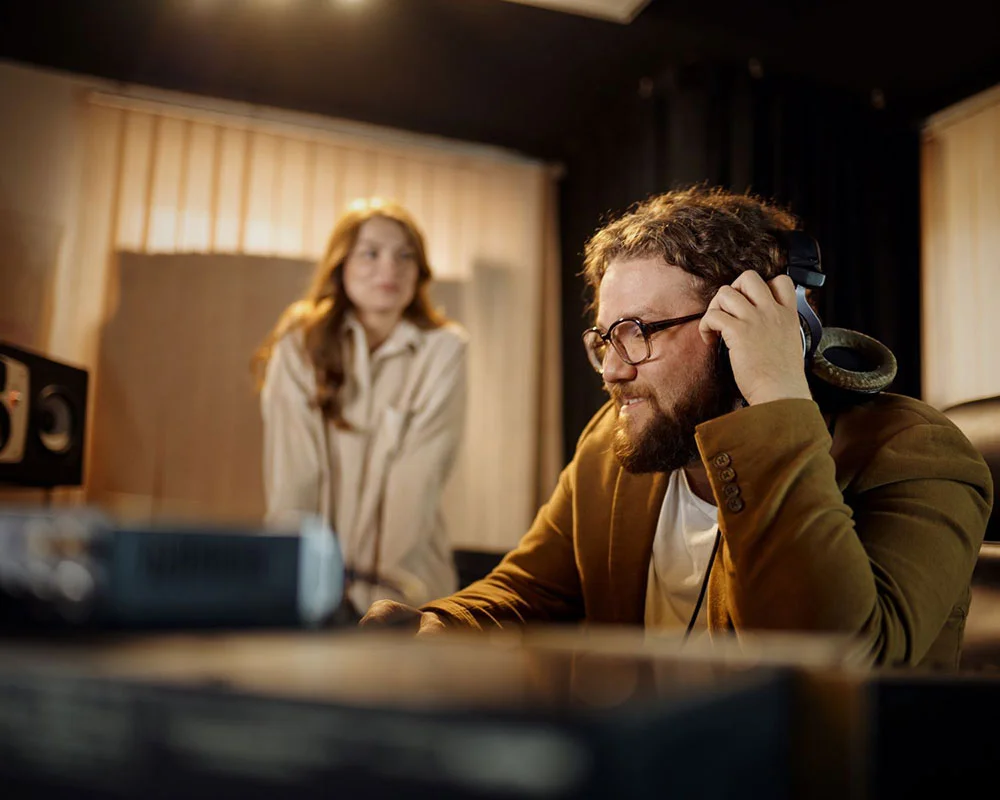
You’ve probably heard of Autotune’s impact on the music industry. It’s a debate that splits artists and producers alike. Some view it as a tool, while others see it as a crutch.
On one hand, Autotune can be seen as a valuable tool. It allows artists to correct pitch imperfections and enhance their vocal performances. It can save time and effort in the studio, as it can quickly fix minor mistakes. Autotune also offers creative possibilities, allowing artists to experiment with unique vocal effects and styles that would otherwise be challenging to achieve.
On the other hand, Autotune can be seen as a crutch that hinders true talent and undermines the authenticity of a performance. Critics argue that it promotes a culture of perfectionism, where artists no longer need to strive for flawless vocal performances. It can also lead to a homogenization of sound, as many artists use the same Autotune settings, resulting in a lack of diversity in the music industry.
Debating the Pros and Cons of Using Autotune
Why wouldn’t you consider the pros and cons of using Auto-Tune before deciding if it’s a valuable tool or just a crutch for your music production?
- Pros: It can discreetly correct imprecise intonations, enhancing your vocal performance.
- Cons: It could be seen as a device to help mask out-of-tune singing, possibly hindering the emotional qualities of the song.
In the end, like auto-tune or not, debating the pros and cons of using autotune is crucial.
Perspectives from Artists and Producers
Consider how various artists and producers view Auto-Tune – is it merely a crutch for those who can’t carry a tune, or an essential tool for creating their musical masterpiece?
Jay-Z, for instance, has criticized its overuse.
Christina Aguilera, however, hails it as a tool for artists who’ve delivered a fabulous performance emotionally yet need minor pitch corrections, a job it was designed for at the NAMM Show later that year.
The Future of Autotune and Vocal Correction
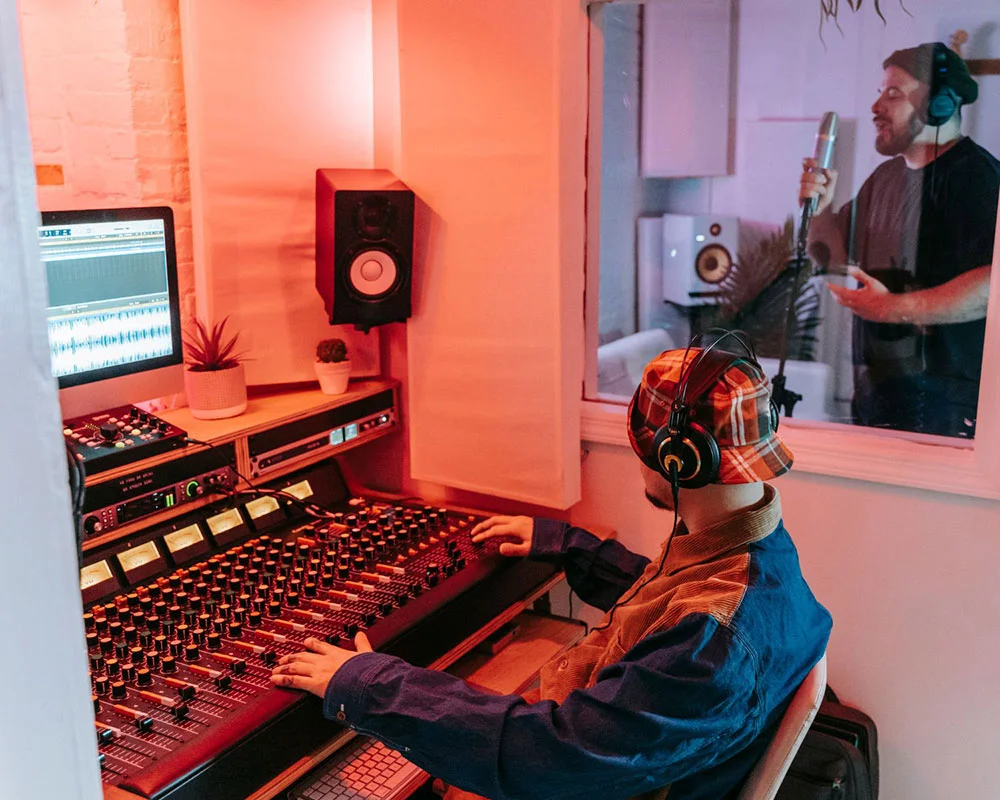
As you look ahead, you’ll find that the future of Autotune and vocal correction is brimming with potential. Innovations and emerging trends in pitch correction software are continually shaping music production.
It’s crucial to consider how Autotune’s role will evolve in this dynamic landscape.
Emerging Trends and Innovations in Pitch Correction Software
You might be surprised to learn about the emerging trends and innovations in pitch correction software, shaping the future of Autotune and vocal correction.
- Advanced autocorrelation methods now allow software to match a singer’s pitch digitally to the key of the song with impressive accuracy.
- New tools enable singers to achieve a perfect pitch, enhancing their performance.
- Innovative features in development promise to further refine what’s Autotune, making vocal correction more seamless and natural.
Predictions for Autotune’s Role in Future Music Production
Moving forward, it’s expected that you’ll witness Autotune and other vocal correction software becoming even more integral in music production. Singers would have to sing with precision, but there may be a few pitch errors, where Autotune would help her sing in tune.
| Future Predictions | Role in Music Production |
|---|---|
| Live Shows | Used most often |
| Performance Emotionally | More Authentic |
| Few Pitch Errors | Corrected Instantly |
| Singers | More Confident |
| Music Production | More Efficient |
Frequently Asked Questions
What Is the Difference Between Autotune and Other Pitch Correction Software?
Autotune is a specific pitch correction software that corrects vocal pitch in real-time. Other pitch correction software might offer different features, such as time correction, or use a different method for detecting and adjusting pitch.
Is It Possible to Detect the Use of Autotune in a Musical Recording or Performance?
Yes, you can detect autotune in music. It’s often heard as a robotic, synthetic tone in vocals. If pitch perfection seems too consistent or unnatural, it’s likely autotune’s been used to tweak the performance.
What Are Some of the Most Famous Songs Known for Their Use of Autotune?
You’ve asked about famous songs with autotune. Cher’s “Believe” is a classic example. T-Pain’s work, notably “Buy U a Drank,” heavily features autotune. Kanye West’s “808s & Heartbreak” album also extensively uses it.
How Has the Use of Autotune Evolved Over the Years in Different Music Genres?
You’ve seen autotune’s evolution across genres, from Cher’s ‘Believe’ to T-Pain’s hip-hop. Initially for pitch correction, it’s now a stylistic choice, creating distinctive soundscapes in pop, R&B, and even country music.
What Are Some Alternatives to Autotune That Artists Can Use for Pitch Correction?
You could use Melodyne, it’s like Autotune’s sophisticated cousin. It offers more nuanced pitch correction, preserving your unique vocal texture. It’s a favorite among pros for its precision and ability to preserve naturalness in vocals.
What is autotune in the context of signal processing?
Autotune in signal processing is a technology or software tool that corrects pitch in vocal and instrumental performances, ensuring they are perfectly tuned despite any performance inaccuracies.
How does autotune predict the correct pitch?
Autotune uses algorithms to analyze the input signals pitch and then predicts the nearest intended musical note, adjusting the pitch to match this note automatically or as set by user preferences.
Can autotune be used on signals other than voice?
Yes, while primarily used for vocals, autotune can also be applied to instruments to correct their pitches or create specific effects.
What is the role of autotune in music production?
In music production, autotune serves both as a corrective measure for off-pitch notes and as a creative tool for achieving desired vocal effects popularized in various music genres.
Does the term autotune have any relevance to pudding?
No, autotune does not directly relate to pudding; it’s a term specific to audio processing and has no meaningful connection with food items like pudding.
Conclusion
So, you’ve journeyed through the world of Autotune, from its humble beginnings to its significant role in modern music.
It’s clear as day that this tool, whether seen as a crutch or an enhancer, has left an indelible mark on the industry.
Remember, ‘the proof of the pudding is in the eating’. The ultimate judgment of Autotune’s value lies not in the debates, but in the unique and captivating sounds it adds to our favorite tunes.
Music Technology Innovations,Audio Software Development,Vocal Microphone Techniques,Music Production Competitions,Sound Engineering Journals,Music Production Influencers,Audio Restoration Software,Soundtrack Composers,Music Arrangement Concepts,Audio Compression Techniques,Voice Acting Tools,Music Sampling,Sound Effects Libraries,Music Production Podcasts,Audio Mastering Services,Music Mixing Techniques,Multitrack Recording Software,Home Recording Setups,Music Technology Conferences,Audio Post-Production,Autotune in Voice-overs,Soundtrack Production,Autotune in Music Therapy,Vocal Enhancement Plugins,Music Production Blogs,Sound Engineering Certifications,Audio Editing Workshops,Autotune in Indie Music,Vocal Training Software,Music Collaboration Platforms,Sound Layering,Autotune in Podcast Production,Music Production Software Reviews,Autotune in YouTube Covers,Online Music Forums,DIY Music Production,Sound Mixing Boards,Studio Microphones,Audio Interface,Vocal Harmony Processors
Music Production Courses,Autotune Mobile Apps,Music Editing Tutorials,Recording Techniques,Sound Synthesis,Audio Engineering Schools,Autotune in Karaoke,Musician’s Toolkit,Electronic Music Production,Voice Processing Technology,Digital Music Production,Music Software Developers,Sound Engineering,Music Editing,Vocal Production,Sound Recording,Audio Engineers,Music Industry,Vocal Tuning Techniques,Digital Audio Files,Audio Manipulation,Music Composition,Audio Samples,Vocal Tracks,Sound Waves,Studio Equipment,Voice Modulation,MIDI Controllers,Music Editing Software,Autotune in Film Scoring,Audio Mixing,Vocal Effects,Music Technology,Synthesizers,Recording Engineers,Music Producers,Audio Plugins,Ableton Live (Digital Audio Workstation),Cubase (Digital Audio Workstation),FL Studio (Digital Audio Workstation),Logic Pro (Digital Audio Workstation),Melodyne (Alternative pitch correction software),Vocoder (Similar technology),Audio Effects,Sound Design,Music Engineering,R&B Music,Hip-Hop Music,Pop Music,Kanye West (Artist known for Auto-Tune use),Digital Signal Processing,Live Performances,Pro Tools (Digital Audio Workstation), famous for the song “Believe” using Auto-Tune),Cher (Artist,T-Pain (Artist known for Auto-Tune use),Antares Audio Technologies (Creator of Auto-Tune),Recording Studios,Music Production,Vocal Processing,Pitch Correction Software,slapback echo,music,lost in the world
singer,kid a,random access memories,vst,t pain,anaconda,amnesiac,singing,vocalist,pitch-correction,artificial double-tracking,autotuning,antares audio technologies,andy hildebrand,no frauds,auto tune,to-tune,autotune in pop music,autotune formula,singers who dont use autotune,autotune algorithm,auto tune recording studio,roy vedas fragments of life,why autotune is ruining music,auto tune singers india,pitch correction algorithm,roger troutman autotune,using auto tune,what is pitch correction,auto tune mobile,when was pitch correction invented,artists who use autotune,autotune vs pitch correction,auto tune software,auto tune live,auto tune app,auto tune pro,how stuff works autotune,the science behind autotune,how does auto tune work live,did queen use autotune,britney without autotune,mgk autotune,antares auto tune implant,which singers use autotune,antares evo,what singers use autotune,auto tune 5,auto tune pitch correction,auto tune pro crack,autotune fl studio,how to use autotune,auto tune efx,auto tune microphone,auto tuning app,antares autotune,what is autotune in music examples,what was the first song to use autotune,what is autotune in kpop,who started autotune in rap
what is autotune used for,autotune example,autotune free,what is autotune in tensorflow,what is autotune unlimited,what is autotune microphone,what is autotune and how does it work,what is autotune in songs,what is autotune in rap,what is autotune meaning,what is autotune voice,what is autotune for singers,whats autotune,what is autotune in music,what is autotune,How do you know if a singer is autotune?,Can bad singers use autotune?,Can singers sing live with autotune?,Has anyone from The Voice become famous?,Who is the most famous person from The Voice?,Has Gwen Stefani ever won The Voice?,What celebrities use Auto-Tune?,Does Billie Eilish use Auto-Tune?,Has Taylor Swift ever used Auto-Tune?,Do singers like their own voice?,Can you learn to sing or is it natural?,Why does my voice sound beautiful when I sing but when recorded it sounds horrible?,Which Auto-Tune is the best?,When did Lil Wayne start using Auto-Tune?,Why do singers close their eyes when singing?
4>
Why does Auto-Tune sound unnatural?,Why is Auto-Tune bad for music?,Why is Auto-Tune frowned upon?,What rock bands use Auto-Tune?,Does Ed Sheeran have perfect pitch?,Does Ed Sheeran use Auto-Tune?,Does Rihanna use Auto-Tune?,Did Freddie Mercury use Auto-Tune?,Did Dwayne Johnson use Auto-Tune?,What rapper uses a lot of autotune?,Did the Beatles use autotune?,Did Britney Spears use autotune?,Did Ariana Grande use Auto-Tune?,Did Kanye West use Auto-Tune?
Who is the king of Auto-Tune?,Do celebrities use autotune live?,What did singers use before autotune?,Which singers don t use auto tune?,What winner of The Voice has made it big?,Which singer uses the most autotune?,Can a bad singer turn into a good singer?,What was the first song to use autotune?,Why is autotune controversial?,Who was the first singer to use autotune?,Who made autotune famous?,Does Justin Bieber use autotune?,Did Michael Jackson ever use autotune?,Do all singers use autotune now?,Do singers on the voice use autotune?,Can autotune make a bad singer sound good?,Does auto tune change your voice?,Why do singers use autotune?
Logic Pro (Digital Audio Workstation),Melodyne (Alternative pitch correction software),Vocoder (Similar technology),Audio Effects,Sound Design,Music Engineering,R&B Music,Hip-Hop Music,Pop Music,Kanye West (Artist known for Auto-Tune use),Digital Signal Processing,Live Performances,Pro Tools (Digital Audio Workstation), famous for the song “Believe” using Auto-Tune),Cher (Artist,T-Pain (Artist known for Auto-Tune use),Antares Audio Technologies (Creator of Auto-Tune),Recording Studios,Music Production,Vocal Processing,Pitch Correction Software,slapback echo,music,lost in the world



